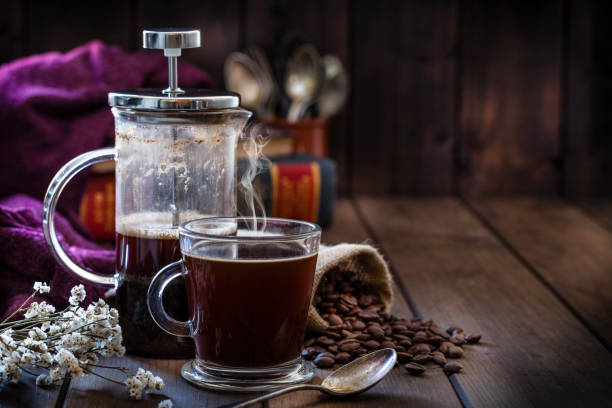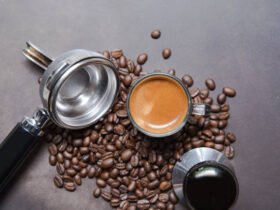The French press, a timeless classic in the world of coffee brewing, has been delighting coffee lovers for decades. Its simplicity and ability to produce rich, flavorful coffee make it a favorite among enthusiasts and casual drinkers alike. However, mastering the French press requires more than just plunging ground coffee and hot water into a beaker. As a coffee specialist, I’m here to guide you through the nuances of this iconic brewing method. Let’s explore how to elevate your French press game to craft the perfect cup every time.
Understanding the French Press: A Brief Overview
Before we dive into the tips, let’s take a moment to appreciate the French press. Invented in the 1920s, this brewing device consists of a cylindrical glass or stainless-steel beaker and a plunger with a mesh filter. Unlike drip coffee makers or espresso machines, the French press relies on immersion brewing. This means the coffee grounds steep directly in hot water, allowing for maximum flavor extraction.
The result? A bold, full-bodied cup of coffee that’s rich in natural oils and free from the paper filter’s absorption. But while the French press is relatively straightforward, achieving the perfect brew involves a bit of finesse.
Tip 1: Start with Fresh, High-Quality Coffee Beans
The foundation of any great cup of coffee lies in the beans. For French press brewing, opt for freshly roasted, high-quality coffee beans. Here’s why it matters:
- Freshness Equals Flavor: Coffee beans begin to lose their flavor soon after roasting. Grinding your beans just before brewing ensures you capture the freshest taste.
- Bean Quality: Specialty-grade beans, sourced from reputable roasters, offer complex flavors and fewer defects.
Choosing the Right Roast Level
The French press works well with a variety of roast levels. Light roasts bring out fruity, floral notes, while medium and dark roasts enhance chocolatey, nutty, or smoky flavors. Experiment to find your preferred profile, but avoid overly oily beans, as they can clog the filter.
Tip 2: Get Your Grind Right
The grind size is crucial for French press brewing. A coarse grind is ideal because it:
- Prevents Over-Extraction: Fine grounds can seep through the mesh filter, leading to a bitter, gritty cup.
- Improves Filtration: Coarser grounds are easier to separate from the brewed coffee, resulting in a cleaner texture.
How to Achieve the Perfect Grind
Using a burr grinder is the best way to achieve a consistent coarse grind. Unlike blade grinders, which produce uneven particles, burr grinders allow you to control the grind size precisely. Adjust your grinder until the particles resemble sea salt in size and texture.
Tip 3: Master the Coffee-to-Water Ratio
Getting the coffee-to-water ratio right is essential for a balanced brew. As a general rule, use a ratio of 1:15—that is, one gram of coffee for every 15 grams (or milliliters) of water. For a standard 8-cup French press, this equates to about 55 grams of coffee for 900 milliliters of water.
Measuring for Precision
While you can use a tablespoon as a rough guide, investing in a digital kitchen scale allows for greater precision. Consistency is key, especially if you’re experimenting with different bean varieties and grind sizes.
Tip 4: Perfect Your Brewing Technique
Brewing coffee with a French press is as much an art as it is a science. Follow these steps for a flawless cup:
Step 1: Preheat the French Press
Rinse the beaker with hot water to warm it up. This step prevents heat loss during brewing, ensuring your coffee stays at the optimal temperature.
Step 2: Bloom the Coffee
Add the ground coffee to the beaker and pour just enough hot water to saturate the grounds. Let it sit for 30 seconds. This process, called blooming, allows trapped gases to escape, enhancing flavor extraction.
Step 3: Pour and Stir
After blooming, pour the remaining hot water (around 93–96°C) into the beaker. Stir gently with a wooden or plastic spoon to ensure even saturation.
Step 4: Steep and Plunge
Place the lid on the French press without plunging. Let the coffee steep for four minutes. When the time is up, press the plunger down slowly and steadily to separate the grounds from the liquid.
Tip 5: Serve Immediately and Clean Thoroughly
To enjoy your coffee at its best, serve it immediately after brewing. Leaving it in the French press can result in over-extraction and a bitter taste. Transfer any leftover coffee into a thermal carafe to maintain its flavor and temperature.
Cleaning Your French Press
Regular cleaning is essential to maintain the quality of your brews. Disassemble the plunger and rinse all parts thoroughly after each use. For a deeper clean, use a mild detergent and a soft brush to remove coffee oils and residue.
Troubleshooting Common French Press Issues
Even seasoned coffee drinkers encounter challenges with the French press. Here’s how to address some common problems:
- Gritty Coffee: Ensure your grind is coarse enough and avoid pressing the plunger too forcefully.
- Weak Flavor: Use more coffee or steep for a slightly longer time.
- Bitter Taste: Shorten the steeping time or lower the water temperature.
Experimenting with Your French Press
Once you’ve mastered the basics, don’t be afraid to get creative. Try experimenting with:
- Different Beans: Explore single-origin coffees and blends to discover new flavor profiles.
- Cold Brewing: Use your French press to make cold brew by steeping coffee in cold water for 12-24 hours.
- Infusions: Add spices like cinnamon or cardamom to the grounds for a unique twist.
Why the French Press Remains a Favorite
The French press offers unparalleled control over the brewing process, making it a favorite for coffee purists. Its simplicity, versatility, and ability to produce a full-bodied cup of coffee keep it relevant in a world of advanced coffee machines. Whether you’re a seasoned barista or a curious beginner, mastering the French press can transform your coffee experience.
Final Thoughts
Brewing with a French press is a journey of discovery. By focusing on high-quality beans, precise measurements, and careful technique, you can elevate your coffee to new heights. Remember, the joy of coffee lies not just in the result but also in the process. So take your time, experiment, and savor the art of French press brewing. Your perfect cup awaits!





